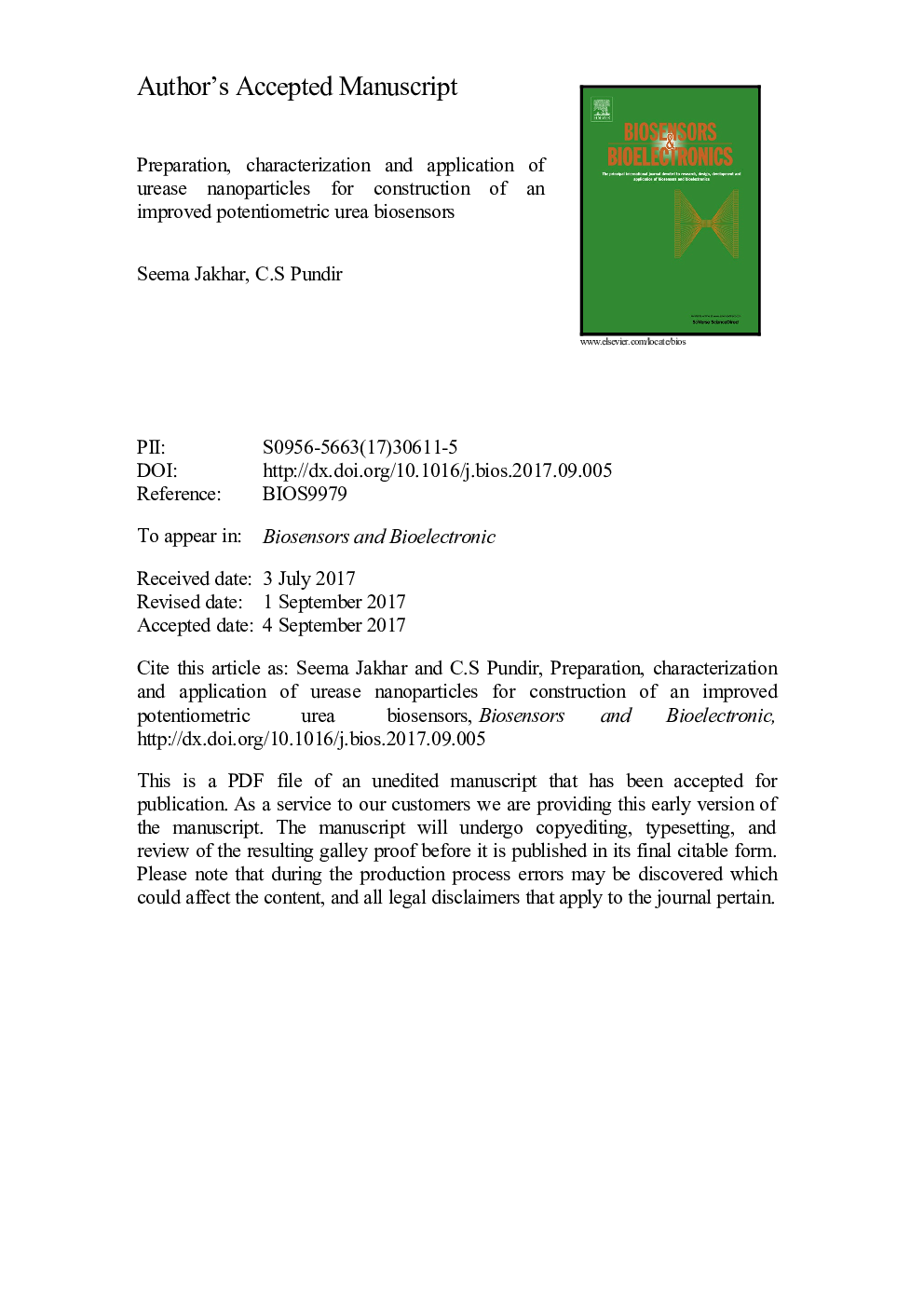| کد مقاله | کد نشریه | سال انتشار | مقاله انگلیسی | نسخه تمام متن |
|---|---|---|---|---|
| 5030787 | 1470932 | 2018 | 27 صفحه PDF | دانلود رایگان |
عنوان انگلیسی مقاله ISI
Preparation, characterization and application of urease nanoparticles for construction of an improved potentiometric urea biosensor
ترجمه فارسی عنوان
آماده سازی، مشخص کردن و کاربرد نانوذرات اوره آز برای ساخت یک ارتعاش پویو سنجی ارتوپدی
دانلود مقاله + سفارش ترجمه
دانلود مقاله ISI انگلیسی
رایگان برای ایرانیان
کلمات کلیدی
موضوعات مرتبط
مهندسی و علوم پایه
شیمی
شیمی آنالیزی یا شیمی تجزیه
چکیده انگلیسی
The nanoparticles (NPs) aggregates of commercial urease from jack beans (Canavalia ensiformis) were prepared by desolvation and glutaraldehyde crosslinking and functionalized by cysteamine dihydrochloride. These enzyme nanoparticles (ENPs) were characterized by transmission electron microscopy (TEM), UV and Fourier transform infrared (FTIR) spectroscopy. The TEM images of urease NPs showed their size in the range, 18-100 nm with an average of 51.2 nm. The ENPs were more active and stable with a longer shelf life than native enzyme molecules. The ENPs were immobilized onto chitosan (CHIT) activated nitrocellulose (NC) membrane via glutaraldehyde coupling with 32.22% retention of initial activity of free ureaseNPs with a conjugation yield of 1.63 mg/cm2. This NC membrane was mounted at the lower/sensitive end of the ammonium ion selective electrode (AISE) with O-ring and then electrode was connected to a digital pH meter to construct a potentiometric urea biosensor. The biosensor exhibited optimum response within 10 s at pH 5.5and 40 °C. The biosensor was employed for measurement of potentiometric determination of urea in sera of apparently healthy and persons suffering from kidney disorders. The biosensor displayed a low detection limit of 1 µM/L with a wide working range of 2-80 µM/L (0.002-0.08 mM) and sensitivity of 23 mV/decade. The analytical recovery of added urea in serum was 106.33%. The within and between-batch coefficient of variations (CVs) of present biosensor were 0.18% and 0.32% respectively. There was a good correlation (r = 0.99) between sera urea values obtained by reference method (Enzymic colorimetric kit method) and the present biosensor. The biosensor had negligible interference from Na+,K+,NH+4 and Ca2+ but Mg2+,Cu2+ and ascorbic acid but had slight interference, which was overcome by specific ion selective electrode. The ENPs bound NC membrane was used maximally 8-9 times per day over a period of 180 days, when stored in 0.01 M sodium acetate buffer pH 5.5 at 4 °C.
ناشر
Database: Elsevier - ScienceDirect (ساینس دایرکت)
Journal: Biosensors and Bioelectronics - Volume 100, 15 February 2018, Pages 242-250
Journal: Biosensors and Bioelectronics - Volume 100, 15 February 2018, Pages 242-250
نویسندگان
Seema Jakhar, C.S. Pundir,
